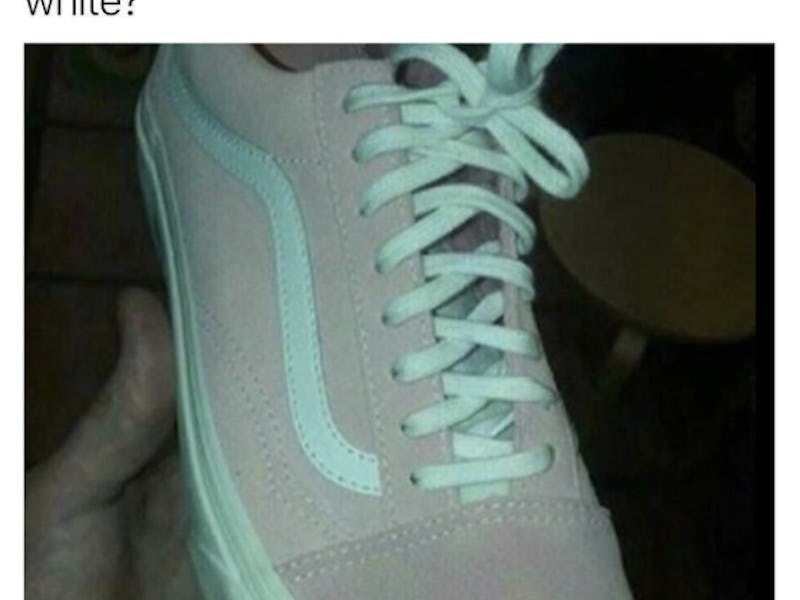Internet arguers, start your engines! Another visual illusion is making the rounds on the internet as people sweat over the color of this sneaker — well, this Van, to be more precise. Some people see it as mint and gray, while others — this reporter included — see it as white and pink. This image brings to mind the week back in 2015, which many readers may remember, when people went wild over “the dress.” That photograph sparked a fierce debate: Was the dress black and blue or was it gold and white? Everyone had a strong opinion on its real color (which turned out to be black and blue, though this reporter still can’t see it).
More than just a simple exercise in the ever-popular sport of internet arguing, this case also illuminated some psychological principles about how personal experiences can create assumptions about the world and how those assumptions shape our perception. Those same ideas are at the center of this latest meme, New York University Clinical Assistant Professor of Psychology Pascal Wallisch tells Inverse.
“This is an instance of the same phenomenon,” he explains. Wallisch, who researches the ways perception shapes our reality, is something of an expert on this topic. In June, he published the definitive answer to why the dress was so polarizing, drawing on 13,000 surveys from people who had seen pictures of the dress. Here’s what Inverse reported:
… the way a person perceives the color of the dress comes down to how they assume it is illuminated. He discovered that if people assumed the dress was lit by artificial light, they tended to think it was black and blue. However, if people believed the dress was just shadowed in natural light, they thought it was gold and white.
White and gold or blue and black? 2015 was an enlightening year for sensory perception.
Further, Wallisch reported that morning people were more likely to see the dress as white and gold because they were biased toward assuming the world is lit by sunlight, whereas non-morning people have more of an assumption that the world is lit by artificial light, which helped them see the actual color of the dress. Since the Van is lit strangely, people use their personal experience to fill in the missing information.
“Ill-defined lighting conditions are being filled in by lighting assumptions, and they differ between people due to a variety of factors, including which light they have seen more of,” says Wallisch. “Just as described in my original paper.”
But why the fierce debate? Wallisch says that it’s due, in large part, to our assumption that we see basically the same reality as everyone else. Therefore, if I see it one way and you see it another, I assume you’re wrong. And since we simply assume that our eyesight shows us reality, it can be deeply unsettling to learn that there’s no consensus on reality. This deep conflict is why Wallisch finds these stimuli so fascinating.
“I think the same thing — more or less — applies to social and political questions,” he says. “We take our experience at face value and fill the rest in with assumptions that are based on prior experience. As people’s experiences will differ, disagreements abound.”
But now that people have gotten a little more used to these internet phenomena in which our perception can’t quite be trusted — like the gray strawberries — he’s skeptical about whether the Van will go viral like the dress did.
“It is (in my opinion) getting a bit repetitive, so I doubt it will become as much of a social media wildfire as the original dress,” he says. He does, however, think it could be therapeutic for people to argue over something relatively benign that sparks curiosity.
“Hopefully, it will make people more comfortable with the notion that they can fundamentally — but sincerely — disagree with their fellow man.”
